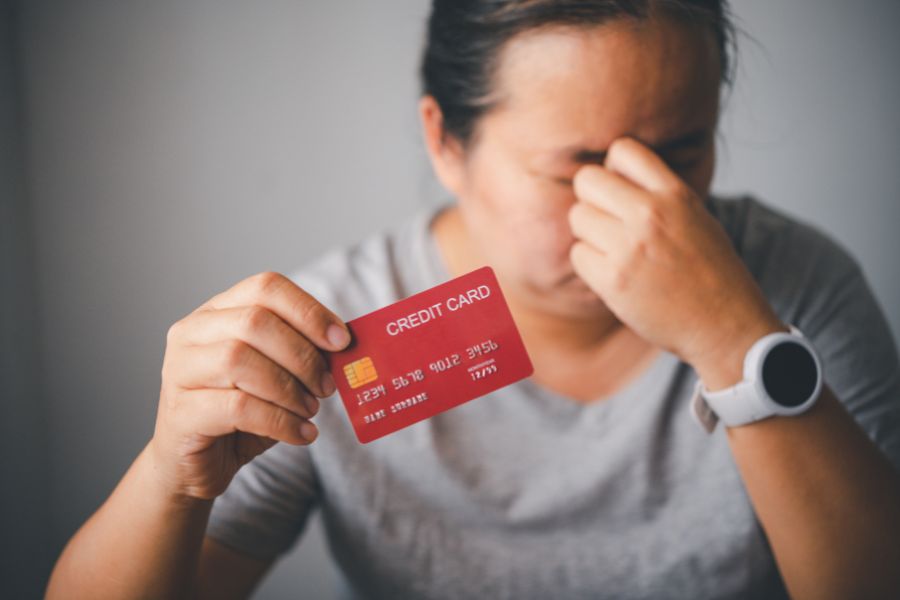Back when my credit score hovered in the 500s, getting approved for decent loans or credit cards felt impossible. I spent months feeling stuck and frustrated. Then, I stumbled across a credit card strategy that changed everything. Within half a year, I boosted my credit score by 150 points. I did it by managing my cards strategically, keeping my utilization ratios low, and timing my payments just right.
It wasn’t just about paying bills on time or disputing errors—those tips never really moved the needle for me. I needed a real system. Managing multiple cards, making payments at the perfect time, and using some sneaky utilization tricks most people ignore? That’s what actually worked.

This approach worked way faster than the typical credit repair advice. I tackled several scoring factors at once and saw results I didn’t think were possible. Let me break down the exact steps I took to go from poor credit to excellent. I’ll share the credit card moves that made the biggest difference, what mistakes to avoid, and why this method beats the generic stuff you find online.
Key Takeaways
- Using credit cards strategically can boost your score much faster than old-school methods.
- Keeping your utilization low and paying at the right time has a compounding effect.
- Targeting several scoring factors at once brings the fastest results.
The Proven Credit Card Strategy for Rapid Score Growth
Two things made the biggest difference: keeping a flawless payment history and keeping my credit utilization under 10%. These two habits impact the largest parts of your credit score.
1. Prioritize Payment History
Payment history makes up a whopping 35% of your credit score. Missing even one payment can tank your score by 60 to 110 points. I set up automatic payments for the minimum due on every card. That way, I never missed a payment, even when life got hectic.
Payment history lingers on your credit report for seven years. One misstep can haunt you for ages. To stay ahead, I paid every bill at least five days before it was due. Credit card companies report late payments after 30 days, so I never let a payment get close.
Paying off my full statement balance every month also helped. Lenders saw I managed credit responsibly, and I saved a ton on interest.
Quick payment timing tips:
- Automate minimum payments
- Pay the full balance five days early
- Never let an account go past 29 days late
2. Use Credit Cards the Smart Way
Credit utilization is 30% of your score, so I made it my top priority after payment history.
I aimed for under 10% utilization across all cards. For example, with a $10,000 total limit, I never let balances go over $1,000. Instead of waiting for the statement, I paid down balances throughout the month. This “pay early, pay often” approach kept my reported balances low.

My utilization playbook:
- Total utilization under 10%
- Each card under 30%
- Pay before the statement closes
- Never max out a card
Every six months, I asked for credit limit increases. Higher limits instantly lowered my utilization, and most card companies approved online requests within minutes. By combining zero missed payments with low utilization, I watched my score shoot up 150 points in just 18 months.
Mastering Credit Utilization and Card Management
Low credit utilization and on-time payments really are the secret sauce. I focused on these and saw my score jump by 150 points.
3. Keep Credit Utilization Below 30%
Credit utilization measures how much of your available credit you’re using. Keeping it below 30% is crucial. To figure out your ratio, divide your total balances by your total credit limits. If you’ve got $1,000 in balances and $5,000 in limits, you’re at 20%.
Here’s what worked for me:
- Paid balances twice a month, not just once
- Requested credit limit increases every six months
- Kept old cards open to boost my total limits
- Spread balances across several cards instead of loading up one
Paying down my highest-balance card first made the biggest difference. I dropped from 85% utilization to 15% in three months by focusing on the worst offender.
4. Set Up Automatic Payments
Missing a payment can drop your score by up to 110 points. I didn’t want to risk that.

I set up autopay for at least the minimum on every card. When possible, I automated the full statement balance so I’d avoid interest.
Here’s how I set up payments:
| Payment Type | Amount | Timing |
|---|---|---|
| Minimum Payment | Full minimum due | 5 days before due date |
| Statement Balance | Full balance | 2 days before due date |
I made sure payments came from my checking account, not between credit cards. That way, I avoided accidental delays.
Text alerts for upcoming due dates gave me extra peace of mind. Between autopay and reminders, I never missed a deadline.
Maximizing Rewards While Protecting Your Credit
You can earn great rewards without hurting your credit if you pick the right cards and use them wisely. It’s all about matching cards to your habits and keeping your credit healthy.
5. Choose the Right Rewards Card
Picking the right rewards card really matters. I look for cards that fit my spending style, not just the biggest sign-up bonuses. Rotating category cards are great if you remember to activate them, but I prefer flat-rate cards for simplicity.
Annual fees can sneak up on you. I only pay a fee if the rewards clearly beat the cost—my rule is a $200 minimum net gain.
My card checklist:
- No annual fee for daily use cards
- High earning rates in my main spending categories
- Simple redemption options I’ll actually use
- Features that help build credit
Before applying for a new card, I check my utilization. Keeping it under 10% per card helps both my score and my rewards.
6. Make the Most of Ultimate Rewards Points
Ultimate rewards points are my favorite—super flexible. I can transfer them to travel partners or cash them out without losing value. The Chase Sapphire Preferred gives extra value when booking travel, but I get even more by transferring points to airline partners.

I use different Chase cards for different purchases. Freedom Unlimited for 1.5x on everything, Freedom Flex for 5x in rotating categories.
My rewards routine:
- Use Freedom cards for bonus categories
- Transfer points to Sapphire for better redemptions
- Book travel with partners for max value
- Save points for big redemptions
I check my points every month. As long as I keep my accounts open, my Chase points never expire. The trick? Earn with lower-tier cards, redeem with premium ones for the best deal.
Upgrading Your Financial Strategy Beyond 150 Points
After hitting that 150-point boost, it’s all about maximizing value and protecting your credit. I track benefits and make careful decisions about keeping, downgrading, or canceling cards.
7. Review Card Benefits Every Year
Every January, I set a reminder to review each card. This habit saved me hundreds in wasted annual fees and helped me optimize rewards.
Here’s my yearly checklist:
- Add up all rewards earned vs. annual fees paid
- See which spending categories gave me the most points
- Check if I used premium perks like lounge access
- Compare my cards to new offers out there
I keep a simple spreadsheet: Card Name, Annual Fee, Value Received. If a card doesn’t earn at least $100 more than the fee, I think about canceling it. The Chase Sapphire Reserve taught me this lesson. I paid $550 a year but only got $200 in travel credits and didn’t use the lounge.
I track quarterly bonus categories too. My Discover It card rotates between gas, groceries, and restaurants, so I set phone alerts before each quarter.
8. Know When to Upgrade, Downgrade, or Cancel Cards
Timing matters. I don’t cancel cards on a whim or upgrade just for shiny perks.

I upgrade cards when:
- My spending habits shift a lot
- The new annual fee pays for itself in six months
- I’ll actually use the premium perks
I downgrade cards when:
- I’m not using the fancy features anymore
- There’s a no-fee version with the same bank
- I want to keep the credit line and history
I cancel cards when:
- The annual fee outweighs the perks by over $50
- No downgrade option exists
- I have plenty of other credit lines
I never cancel my oldest cards—they anchor my credit history. Instead, I put small recurring charges on them, like Netflix.
Spacing out these changes is key. I wait at least three months between major card moves. That way, I avoid a bunch of hard inquiries hitting my score at once.
Frequently Asked Questions
People ask me all the time about the nuts and bolts of boosting credit scores with credit cards. Here are the answers I give most often.
How does responsible credit card use actually improve my score?
Responsible card use helps your score through payment history and utilization. I keep utilization under 10% and never miss a payment.
Since payment history is 35% of your score, I use autopay so I never forget a due date.
Utilization is 30%. I pay down balances before statements close so the reported numbers stay low.
Having several cards with low balances works better than one with a high balance. I spread out my spending.
What’s the fastest way to boost my credit score in a month?
Paying off high balances before your statement date can raise your score in 30 days. Lenders report monthly.
I dispute errors on my credit report right away—fixing mistakes can help fast.
Asking for credit limit increases (without spending more) lowers your utilization instantly. I do this every six months.
Paying off past-due accounts removes negative marks quickly. Even small overdue amounts can hurt a lot.
Why did my score drop even though I paid on time?
Your utilization may have crept up. I check it monthly to catch surprises.
New credit inquiries can knock off 5–10 points temporarily. Hard pulls stick around for two years.
Changes in your credit mix—like closing old accounts or paying off loans—can shift your score.
Sometimes, your credit limit drops without warning. I keep an eye on my accounts for unexpected changes.
Will paying off student loans change my score a lot?
Paying off student loans removes an installment account from your report. Sometimes your score dips because you lose account variety.
Having both installment and revolving credit helps more than just cards alone.
Your score might drop 10–20 points after paying off loans, but it usually recovers in a few months.
I kept my credit cards active after paying off loans to keep my history long.
Any expert tips from Credit Karma on managing credit scores?
Credit Karma gives free credit monitoring and shows what’s affecting your score. I check in weekly.
They suggest actions based on your profile—usually focused on utilization, payment history, and account age.
Credit Karma highlights the factors hurting your score most. I fix the big stuff first.
Their credit simulator lets you preview how changes will impact your score. I use it before making big moves.
What steps should I take if my credit score isn’t increasing as expected?
First off, check all three credit reports—Experian, Equifax, and TransUnion. I’ve actually spotted different errors on each one, which surprised me.
Sometimes, your credit utilization sneaks up higher than you think, even if you’re always on time with payments. Personally, I try to keep mine under 10% on every card, just to be safe.
Old accounts dropping off your report can mess with your credit history length. When that happened to me, my score dipped, and honestly, it felt unfair.
If you only have credit cards, your credit mix might look a little thin. I decided to add a small installment loan, and it gave my score a nice boost.
Try these steps and see if your score starts moving. It’s a process, but you’ll get there!



